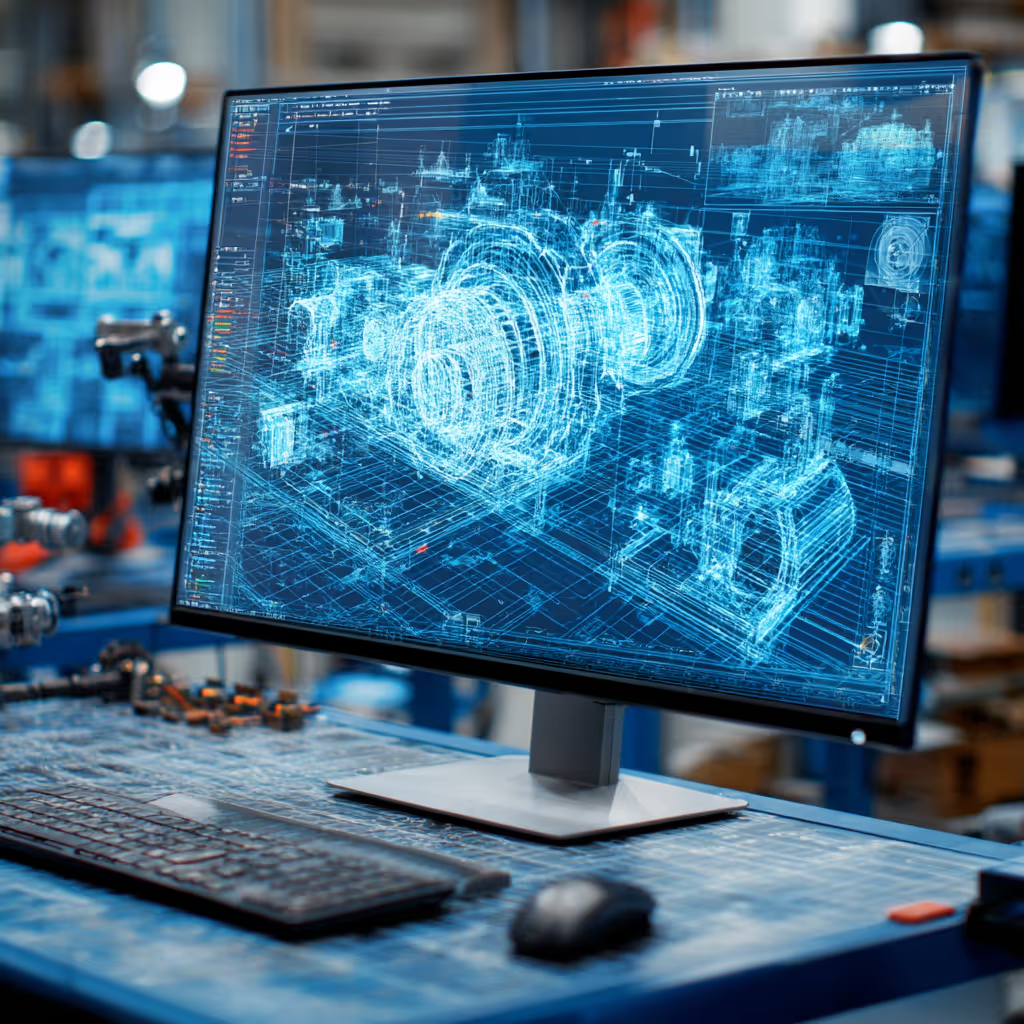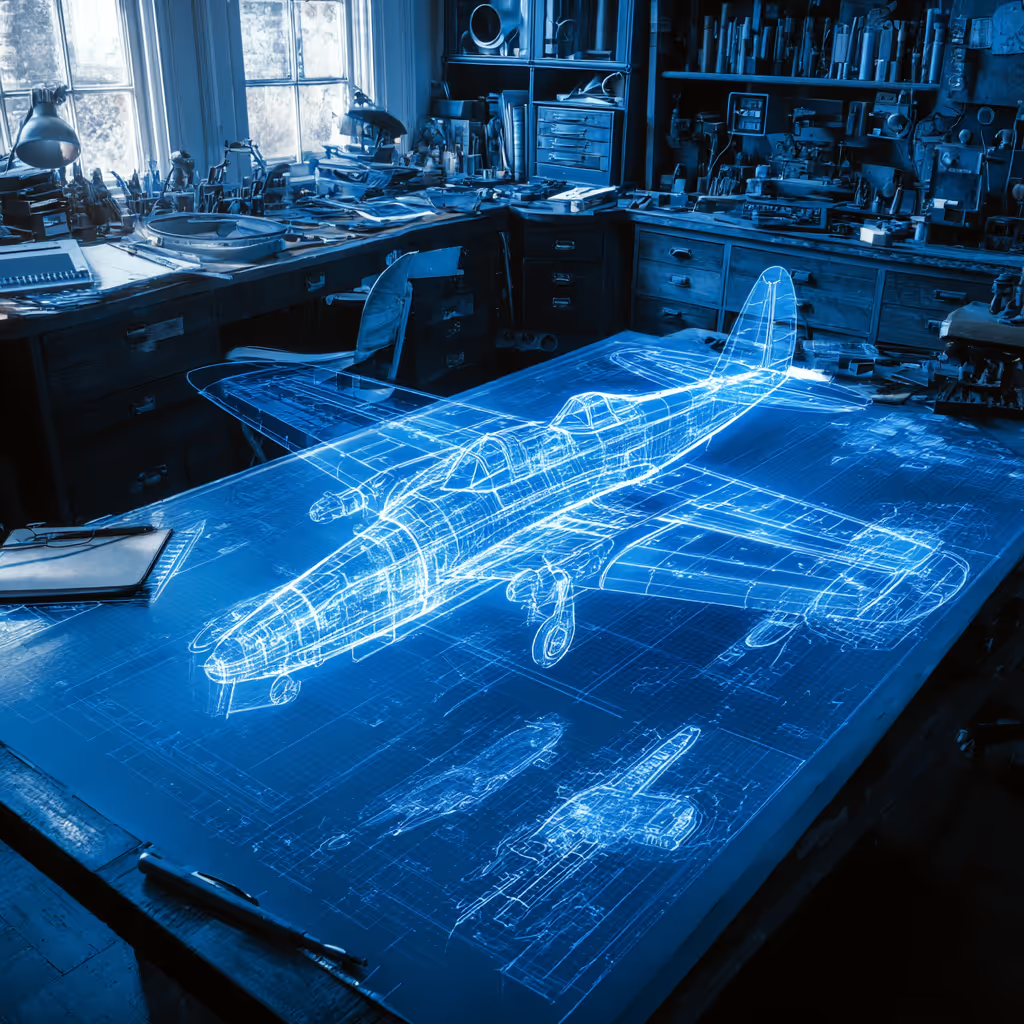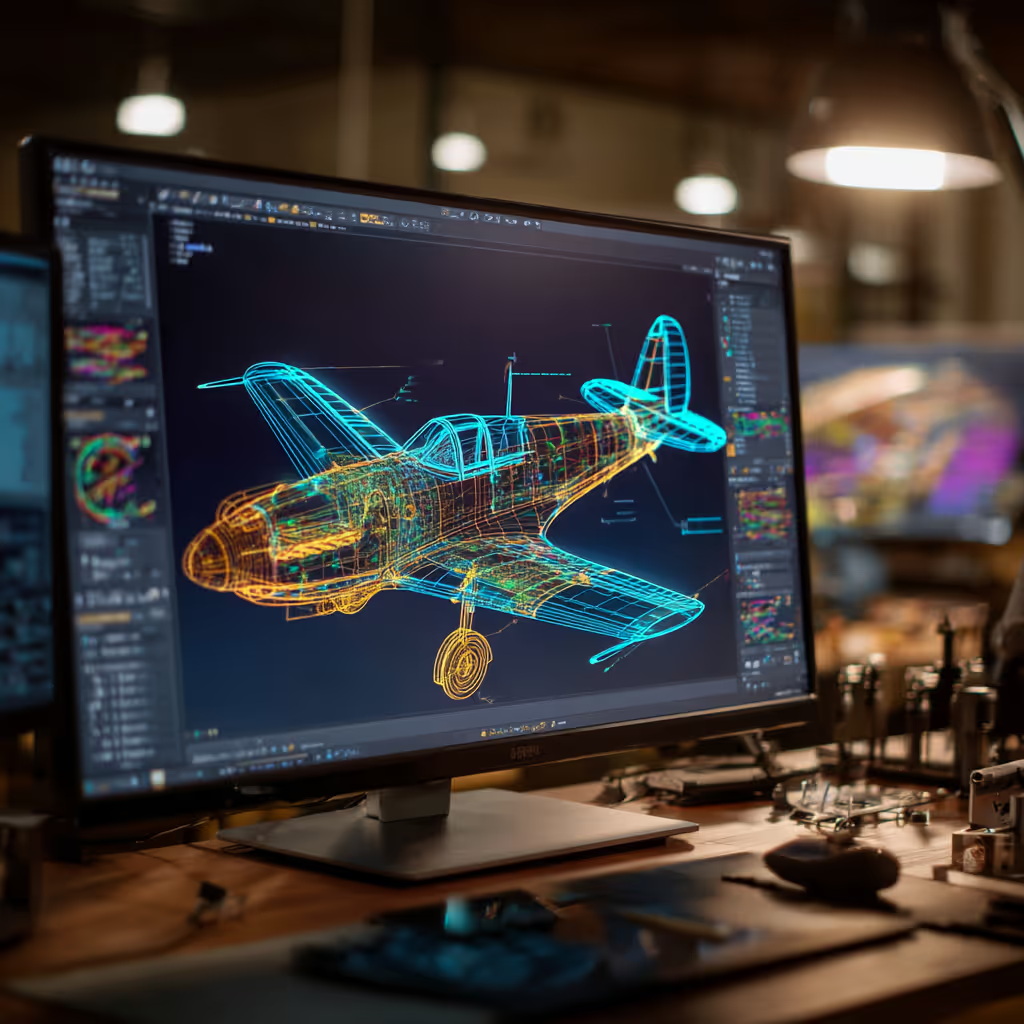Save Time with Scanned Images & CAD Conversion

What are you supposed to do with a drawer full of hand-drawn engineering drawings? If you want to update them, make a 3D model, or digitize them, it starts with a CAD conversion. This process takes some effort and time, but the results speak for themselves.
In this guide, we’ll explain how you can save time with scanned images and CAD conversions. We’ll walk through the details and show you how to get the best results.

What Are Scanned Images and CAD Conversion?
Scanned images are the result of putting a drawing on a large-format plotter, scanning the image, sending it to your computer, and opening it. From there, the file needs to be converted before you can use it on your CAD software.
This conversion is often called raster to vector conversion. The scanned image will show up as a series of pixels, also called a raster. CAD needs the drawing to be in vector format, which means that each line has a position in 2D space. The conversion process entails drawing over the scanned image so you can a usable CAD version.
When Scanned Images Are Great
You might scan a number of different items for various reasons. Maybe you have an old blueprint for one of your buildings and you’re about to update it on CAD. Alternatively, maybe you have a backroom full of hand-drawings that need to be converted to 3D CAD. That can’t start until you convert them all.
Any time you want to update a hand-drawn engineering drawing, you’ll likely need to convert it to CAD first. This will preserve the file digitally, and allow you to change it in 2D or make a 3D model out of the part.
Without a scan, this process can take a lot longer. Scanning the image gives you a digital reference to create a CAD model from.
CAD Conversions are Must-Haves
We recently had a customer who wanted to convert all of their hand-drawn legacy drawings to 3D models. We took care of the scanning and CAD conversion for them, and they quickly realized the impact.
After a CAD conversion, you have a file that you can use for:
- Upgrading products, operations, or process lines
- Marketing
- Installation instructions
- Plant layouts
- Future troubleshooting
Your engineering department might be okay using hand drawings, but what happens if a sheet gets lost, stolen, wet, or damaged? Suddenly, your room of physical drawings becomes useless. With a digital copy, you avoid all of these potential problems.
The Problems with Scanned Images and CAD Conversions
There are a few problems when it comes to scanned images and CAD conversions, though. Let’s discuss them here.
It Takes Time
The biggest problem is the time commitment. Converting these drawings isn’t as easy as just scanning them from your plotter and emailing the file to yourself. The file will send as a PDF which is basically useless on CAD software.
Instead, you’ll need to go through and draw over the scanned image on your CAD software of choice.
This could take hours for each drawing, even if the drawing is simple. Why? There are so many inputs, settings, and precision that’s needed to do a correct CAD conversion.
Sure, you can simply trace over the scanned image and hope for the best, but this could backfire if you’re trying to convert engineering drawings.
The next time you send the part for manufacturing, there could be issues due to this time-saving effort. The bottom line is that converting a lot of drawings the right way takes a lot of time.

It Requires Engineering Efforts
These conversions can’t be done by just anyone. The person converting the scanned image to a CAD model needs to be an engineer or highly trained draftsman. Again, this goes back to the point that the conversion takes a lot of precision and background knowledge.
Suddenly, your engineering staff is tied up converting images instead of working on your new project. Can you afford to pause development for that long?
A lot of our customers can’t.
Your Draftsmen Need to Be Good
The difference between a beginner and expert draftsman will be very obvious during this process. The more experienced draftsman will be able to handle your CAD conversion quicker and get you the best results.
Especially if you have a lot of images to convert, it’s essential to use a highly-trained worker. A lot of companies don’t have access to draftsmen of this caliber. Now you have to decide if you want to hire a new person just for this conversion, or pull one of your senior workers from their project to take care of the conversion.
Avoid Conversion Software
There are some conversion programs offered online that claim to perfectly convert scanned images to vectorized CAD models. We suggest that you stay away from software like this.
For one, it doesn’t always work. In our experience, it misses details in almost every scanned image that we used to test the program. That makes sense, since the software uses automation to speed through the process — of course it misses details.
In addition, these programs are often unsecured. Anyone can gain access to your drawings after you process them through the conversion software. That means that your IP and trade secrets are up for grabs, especially if the software’s developers want to make quick money at your expense.
It’s just not worth it. The risk is too high, and the conversion software usually don’t work right in the first place.
Get the Most Out of Scanned Images and CAD Conversions
So, how are you supposed to convert all of your scanned images to CAD files? In our opinion, the best option is to outsource the CAD conversions.
How does this work? You start by choosing your CAD outsource team. Look for a team that has a lot of experience, a highly experienced staff, and engineers on their team (not just draftsmen).
From there, you would discuss rates and turnaround times with the outsource manager. They would assign people to your project, and get to work.
You sign NDA’s and contracts to protect your IP, then the outsource team converts your scanned images to CAD files manually, not through software. This guarantees precision and gets you the best results.
Conclusion
Scanning images to CAD files isn’t as easy as people think. It takes a good deal of effort and plenty of time to do it correctly. If you want to save time and get the best results, consider CAD/CAM Services.
We are a full-service drafting and engineering firm that will handle your outsourced CAD work. Our staff is full of highly trained engineers, responsible for converting millions of drawings over the years. Get a free quote today.
Recent Posts


Tips for Picking the Perfect 3D CAD Viewer for Your Needs
This guide will teach you about 3D CAD viewers and outline considerations to make before picking the right one. We review 5 options and pick a clear winner.

In this guide, you’ll learn how CAD/CAM Services can save you time and money during each digitization project. Digitization can make manufacturing faster than ever before.

How to Build an Aircraft Model by Converting 3D-Scanned STL Files into Functional 3D STEP Files
This in-depth guide will teach engineers how to use 3D-scanned aircraft files and transform them into manufacturable 3D STEP files with fewer mistakes.
